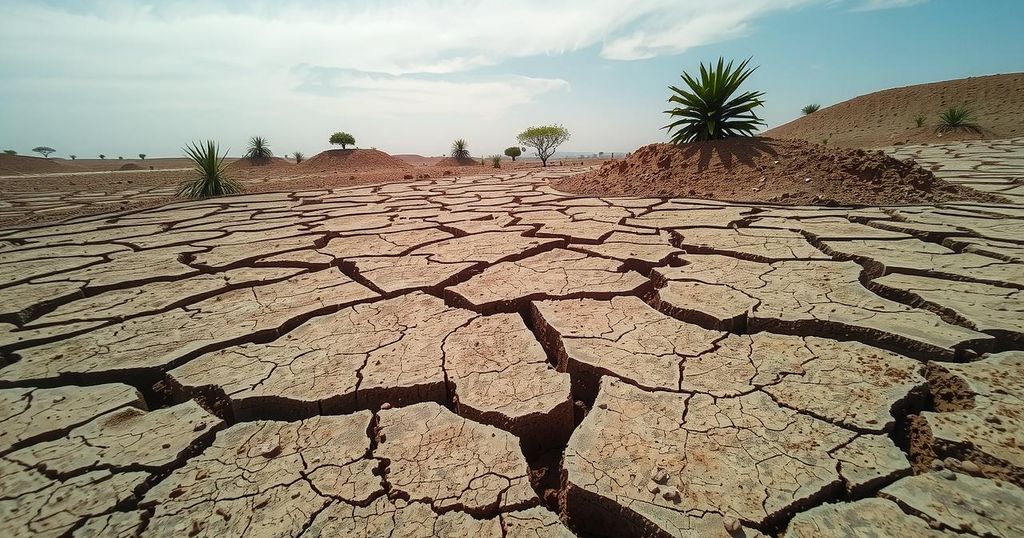A report indicates that only 20% of Kenya’s soil is suitable for farming due to severe degradation, losing up to 90 tons per hectare annually. The situation poses serious risks for agriculture and food security in the region, exacerbated by overgrazing, poor irrigation practices, and nutrient depletion. With 2.8 million people facing acute food insecurity, the report underscores the urgent need for improved soil management and rehabilitation strategies.
A recent report has revealed that only 20 percent of Kenya’s soil is suitable for food production, suggesting serious consequences for the nation’s agricultural sector. The Soil Atlas Health Report 2025 indicates that the country is losing an average of 26 tons of soil per hectare annually due to water-induced erosion, with some regions facing losses exceeding 90 tons.
Soil plays a critical role in ensuring food and nutritional security and is essential in combating climate change, storing more carbon than both vegetation and the atmosphere combined. In East Africa specifically, the situation is dire, as over 40 percent of soils have degraded, posing a significant threat to agriculture in the region.
Multiple factors, including human activities and natural processes, have contributed to this degradation. Practices such as overgrazing, unsustainable farming, and deforestation, along with increasingly erratic weather patterns, have severely compromised soil quality. In dry regions, overgrazing removes protective vegetation, making soil susceptible to erosion and reducing its capacity to hold moisture.
Salinization, the accumulation of harmful salts in the soil, further exacerbates soil degradation in Kenya, particularly in arid and semi-arid areas. Poor irrigation practices are responsible for this issue; evaporating water leaves behind salts that build up to detrimental levels. The report highlights that around 40 percent of irrigated land in Kenya suffers from salinity, complicating the ability to meet agricultural demands.
Nutrient depletion remains another significant challenge, with over 85 percent of soils in the region classified as nutrient-deficient. Continuous farming without replenishment, coupled with increasing soil acidity and inadequate management practices, has intensified this crisis. The report warns that degraded soils may reduce agricultural output by as much as 30 percent, which could lead to increased reliance on food imports.
The National Disaster Management Authority (NDMA) has estimated that approximately 2.8 million individuals may face acute food insecurity between April and June 2026, primarily due to anticipated below-normal rainfall. Notably, the report identified a concerning increase of 650,000 people needing urgent humanitarian assistance, particularly among vulnerable groups such as young children and breastfeeding women.
In conclusion, the Soil Atlas Health Report 2025 highlights the critical state of Kenya’s soil health, with only 20 percent deemed suitable for food production. The implications of soil degradation are severe, threatening food security and increasing dependency on food imports. Immediate and effective measures are necessary to address overgrazing, salinization, and nutrient depletion to safeguard Kenya’s agricultural future and ensure the well-being of its population.
Original Source: www.kenyans.co.ke






